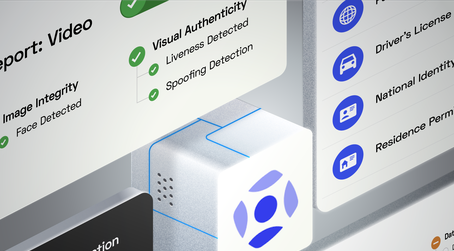
researchHQ’s Key Takeaways:
- The benefits of cloud monitoring solutions include prevention of cybersecurity threats and functionality issues, easy installation, scalability and reduced downtime.
- Public and hybrid cloud environments often suffer from a lack of visibility, making them difficult for organisations to monitor effectively
- Cloud monitoring best practices include identifying key performance indicators (KPIs), establishing good baselines and consolidating all data within a single centralized platform.
Once regarded as a niche technology, cloud computing has come a long way since its debut in the 1960s. In fact, for many businesses, the cloud has become a way of life: 94% of enterprises report using cloud computing technology; an additional 84% claim to have a multi-cloud strategy that consists of a combination of public and private cloud.

With the rise of cloud computing has come the need for cloud monitoring — that is, the continuous monitoring and management of cloud-based IT assets, architecture, and infrastructure to ensure optimal availability and maximum security. There are numerous cloud marketing solutions and services on the market today, as well as a variety of techniques — both manual and automated — to support cloud performance. In this blog post, we’ll explore some of those cloud monitoring tools and techniques, as well as offer some tips to help you get started.
Table of Contents
- Types of Cloud Monitoring
- Website Monitoring
- Database Monitoring
- Virtual Machine Monitoring
- Virtual Network Monitoring
- Cloud Storage Monitoring
- 10 Benefits to Using a Cloud Monitoring Solution
- Public & Hybrid Cloud Monitoring
- Cloud Monitoring Best Practices
- Why Hitachi Solutions?
Types of Cloud Monitoring
The cloud is not a singular entity but rather a collection of different components, each of which plays an integral role in ensuring optimal performance and availability. In order for cloud technology to function as intended, these components must work together as a cohesive unit — if any one of them were to experience an unexpected service interruption, it could lead to disruption and downtime across the entire cloud. That’s why it’s necessary to implement multiple different types of cloud monitoring within your cloud ecosystem, including:
- Website monitoring: This refers to the process by which technicians monitor traffic, availability, resource utilization, and other key performance metrics across cloud-hosted websites to ensure optimal uptime and functionality.
- Database monitoring: This technique requires technicians to monitor database queries, access requests, data integrity, availability, and the consumption of cloud database resources. This is especially important because the vast majority of cloud applications depend on databases, meaning even a brief period of downtime can take systems completely offline. Proactive database monitoring tools, such as uptime detectors, can go a long way toward ensuring a high level of responsiveness and that issues with database stability are expediently resolved.
- Virtual machine monitoring: This refers to the process by which technicians monitor virtual machines (VMs), which are themselves software computers that provide the same functionality as physical computers, and other virtualized infrastructure. Technicians track the users, traffic, and status of each VM to ensure that it is running at peak operating levels.
- Virtual network monitoring: For cloud network monitoring, technicians keep a watchful eye on the connectivity and operational health of the network components to ensure that virtual networks aren’t overwhelmed with traffic and that vital connections don’t go offline. This type of cloud monitoring is often performed by a network operations center.
- Cloud storage monitoring: The process by which technicians monitor storage resources and processes provisioned to VMs, services, databases, and applications. Many organizations will use cloud monitoring solutions to automatically track performance metrics, processes, users, databases, and available storage and use advanced analytics to derive insights from the data they generate.
Note that cloud monitoring should take place across all cloud-based services, including software as a service (e.g. Office 365), platform as a service (e.g. Azure Monitor), infrastructure as a service (e.g. Azure Compute), function as a service (e.g. Azure Functions), and application hosting.
10 Benefits to Using a Cloud Monitoring Solution
Cloud resources can be monitored in a variety of ways; for example, you can use an on-premises application or even a system that is, itself, hosted in the cloud. Both have their advantages, though most organizations choose to use cloud-hosted solutions to monitor public cloud resources.
There are numerous benefits to investing in and implementing a cloud performance monitoring system, including:
- Cloud monitoring tools proactively identify and resolve any problems that could prevent your organization from delivering vital services to your customers, including cybersecurity threats, functionality issues, and slow performance.
- Most cloud monitoring tools come pre-configured, which makes them easy to install.
- Cloud monitoring solutions that are hosted in the cloud don’t require an on-premises footprint, which means you don’t need to invest as many resources into updating and maintaining your monitoring environment.
- Since these solutions are cloud based, they’re far easier to scale across organizations of all sizes and are capable of growing along with your business.
- Service providers take full responsibility for maintaining dedicated cloud monitoring tools and hardware, saving you valuable time and providing you with peace of mind.
- Cloud monitoring solutions are automatically updated on a regular basis, so you don’t need to plan out and schedule updates.
- Thanks to their up-to-the-minute reporting, cloud monitoring solutions make it easy to monitor speed metrics and other KPIs in real time. Best of all, these solutions are compatible with multiple devices, including desktop computers, laptops, tablets, and smartphones, so you can monitor system and application performance from anywhere in the world.
- Cloud monitoring tools use APIs to communicate with your environment, which allows for seamless, agentless interactions — all you need is authentication credentials.
- Cloud monitoring solutions are virtually disaster-proof because all monitoring resources are stored in the cloud rather than in your organization’s servers and workstations. This prevents your cloud performance monitoring system from experiencing service interruptions when local problems arise.
- Because cloud monitoring solutions are virtually disaster-proof, your monitoring environment will experience fewer errors and less downtime, resulting in a better overall customer experience.







